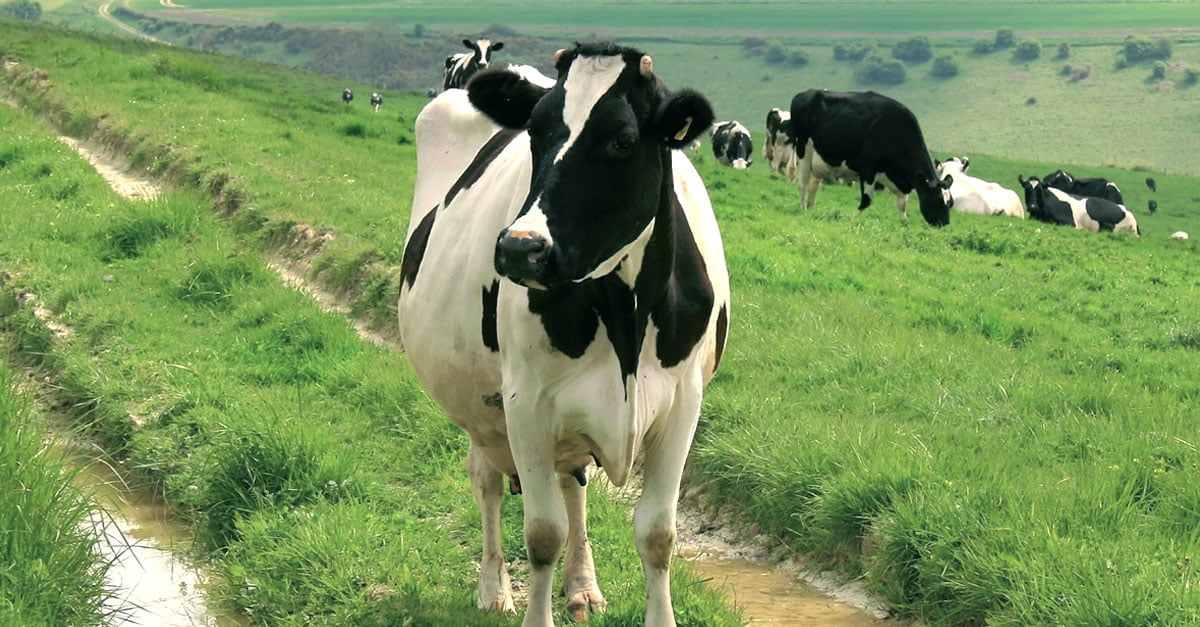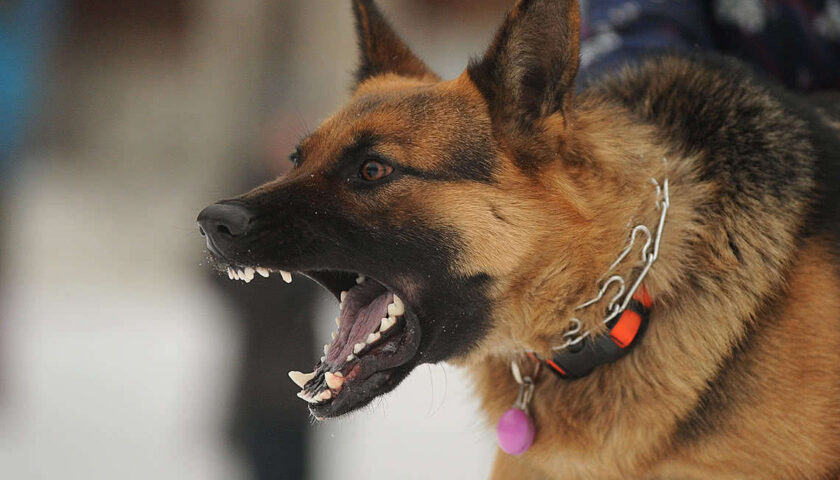Mastitis is an inflammation of the mammary gland or udder. Mastitis in dairy cows is caused by udder infections, usually resulting from bacteria introduced either during the milking process or from environmental contact.
What antibiotics are used to treat mastitis in cows?
The drugs considered include the more common penicillins, aminoglycosides and macrolides; oxytetracyline, chloramphenicol, trimethoprim, and several sulphonamides. The success of systemic therapy against mastitis depends to a large extent on the concentration of antibacterial drug achieved at foci of infection.
What is the best treatment for mastitis in cows?
Treatment approachStripping (hand milking) out the infected milk together with systemic antibiotics such as penicillin and non-steroidal anti-inflammatories (NSAIDs ) as well as treatment with approved products into the udder is my preferred method. This has the greatest chance of success.
What causes mastitis in cattle?
Mastitis in dairy cows is caused by udder infections, usually resulting from bacteria introduced either during the milking process or from environmental contact. Examples include contamination from milking equipment, milking personnel, manure contamination or dirty stalls.
What antibiotic is used to treat mastitis?
Mastitis typically responds to antibiotic treatment within 24 hours. Your doctor may prescribe the antibiotic dicloxacillin. If you’re allergic to penicillin, alternatives include erythromycin (Ery-Tab) or clindamycin (Cleocin). Also, you can clear the infection faster with continued breast-feeding or pumping
What is the treatment for mastitis in cows?
Intramammary antibiotics should be the first-line treatment for cows with mild uncomplicated mastitis in a single quarter. Systemic antibiotics should be used when more than one quarter is affected, when udder changes are marked or when the cow is obviously ill.
How do you treat udder edema?
Massage, repeated as often as possible, and hot compresses stimulate circulation and promote edema reduction. Diuretics have proved highly beneficial in reducing udder edema, and corticosteroids may be helpful. Products that combine diuretics and corticosteroids are available for treatment of udder edema
What causes udder edema?
Udder edema is caused by excessive accumulation of fluid in extravascular spaces of the udder and surrounding tissues. Usual recommendations for minimizing the problem include avoidance of excessive salt, potassium, or body condition before calving.
What bacteria causes mastitis?
Infection is usually caused by Staphylococcus aureus. Infectious pathogens commonly associated with mastitis are Staphylococcus aureus, Streptococcus spp., and Gram-negative bacilli such as Escherichia coli.
Can a calf nurse a cow with mastitis?
Mastitis should be treated as soon as it occurs. Mammary infusions for dairy cows work for beef cows also, according to our veterinarian. … It’s ok if the calf will nurse it, but often the cow won’t let him nurse that quarter because it’s sore. Sometimes there is no milk — just watery fluid.
How do you prevent mastitis in cows?
Mastitis prevention is based on the following scientifically proven principles:
- Create a clean, stress-free environment for cows. …
- Remove all solids and clean teats. …
- Examine the udder. …
- Use proven, effective pre-milking teat dips. …
- Use paper towels or reusable cloth towels to clean and dry teats.
Mastitis prevention is based on the following scientifically proven principles:
1. Create a clean, stress-free environment for cows. For optimal milk production, oxytocin is best stimulated under a stress-free environment for cows. Starting with a clean stall and parlor will decrease the presence of mastitis-causing bacteria.
2. Remove all solids and clean teats. Cleaning the teats before attaching the milking machine is a very important step in preventing bacteria from getting into the teat canal during the milking process.
Environmental organisms such as Streptococcus uberis, Streptococcus dysgalactiae and the coliforms (E. coli, Klebsiella and Enterobacter) are in the soil and manure, which get onto teats. These contaminants must be cleaned off and the bacteria killed before attaching the milking unit.
If they are not, there is always a strong possibility that bacteria could be forced into the teat during the milking process, resulting in a new IMI.
Water is an excellent vehicle for transferring or transporting bacteria, so use water to wash only the heavily soiled teats and lower udder sidewalls. When water must be used, minimize the amount used and have the water pressure level set low.
Be sure the water hoses are flushed out before each milking so that stale water in the hoses that might contain Pseudomonas aeruginosa bacteria is removed and not sprayed onto teats.
If teats are consistently dirty, correct the causes (poorly maintained bedding in stalls, not cleaning alleys often enough, not enough stalls for the herd size, poorly maintained walkways to pastures or exercise lots, etc.).
3. Examine the udder. Look for chapped, cracked and bleeding teats. Examine and score teat ends. Do not use chapped, cracked or bleeding teats or teat ends. These teats are susceptible to new IMIs and should not be milked.
4. Use proven, effective pre-milking teat dips. Teat dips reduce the number of bacteria on teats and thereby help lower the number of new IMIs.
Germicidal teat dips have been proven in numerous research trials to be effective at killing bacteria on the teat surface and reducing the incidence of new udder infections. All dairy producers should routinely use them. Pre-dips should be left on the teats at least 20 seconds before wiping off.
We recommend that a proven, effective germicide be dipped onto the teats rather than sprayed, due to the likelihood that dips will be used more properly and provide better coverage than sprays.
Dip containers must be kept clean in order for the germicide to be effective. Dip cups should be cleaned between each milking or more often, if needed, depending on herd size and cow cleanliness, so they do not become âbacterial contamination cupsâ and spread mastitis to and between cows.
Dips remaining in the dip cups should be disposed of after each dipping session to further prevent the spread of mastitis-causing bacteria. There are many different brands and formulations of teat germicidal products on the market. Use only products that have been proven effective at killing bacteria on teats.
5. Use paper towels or reusable cloth towels to clean and dry teats. One paper or cloth towel should be used for each cow to wipe the teats clean and dry before the milking unit is attached.
Be sure teat ends are cleaned thoroughly so any solids on or around the teat opening are removed. Milking equipment needs a dry teat in order to have the best suction.
If teats are not sufficiently dry, chapping, pinching or bleeding may occur, leaving the cow further susceptible to mastitis-causing bacteria.
6. Fore-strip milk from each quarter. This practice should be done before attaching the milking unit to check for clinical infection. Fore-stripping stimulates oxytocin, which encourages milk let-down and increases milk flow rate.
Fore-stripping may be done before the teat dip is applied, and the teats are wiped clean and dry or after the teat dip is applied. Both ways work equally well in realizing the benefits of fore-stripping.
Fore-stripping has the potential in many dairy operations to improve milk quality and teat end health, reduce the rate of new IMIs and improve parlor performance.
7. Double dip with pre-dip. For even better results, double dipping is a good practice to add to your milking protocol and reduce somatic cell counts.
8. Use milking equipment properly. All personnel who use the milking equipment should be trained on how to properly attach, adjust and remove (if required) the milking unit.
Preventing air admission during the attachment process and adjusting the unit so it hangs properly under the cow are important in preventing or reducing new IMIs and realizing complete, even and rapid milkout.
Whether cows are milked from the side or between the rear legs, proper unit adjustment is required and needs to be observed closely. Quarters that do not get milked out completely should be left alone until the next milking.
Seldom should that procedure result in a clinical mastitis case. Reattaching the unit could do more potential harm. The practice of removing the inflation from one or perhaps two quarters that milk out fast prior to removing the entire milking unit from the cow should be avoided.
Removal of the milking unit from one or more of the quarters before milking is finished may cause air to leak into the claw, impacting the other attached quarters by teat-end impact.
When teat-end impacts occur, bacteria in the milk may be forced into the teat canals of the still-attached quarters and may result in a new IMI.
9. Monitor the milking process. Using milking machines properly is an important part of a milking parlor or milking barn routine, plus an important component of a mastitis management program.
Ensuring that staff is using machines properly and following protocol is important for healthy cows and a well-maintained farm.
Mastitis control and prevention is clearly attainable but requires diligence and the adoption of best practices.
How is mastitis spread?
Transmission.
Mastitis is most often transmitted by repetitive contact with the milking machine, and through contaminated hands or materials. Another route is via the oral-to-udder transmission among calves. … The bacteria will lay dormant in the udder tissue as the calf grows until it begins to lactate..






